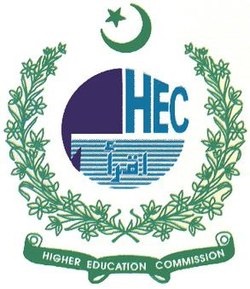HRM Strategies and Sustainable Competitive Advantage: Assessing Strategic Agility Mediating Impact
DOI:
https://doi.org/10.61506/01.00504Keywords:
Agility, HRM, CB-SEM, Competitive Advantage, GlobalizationAbstract
The study thoroughly investigates unexplored impact of HRM strategies in less developed countries. It delves into pivotal strategic agility role as mediator among HRM strategies & sustainable competitive advantage. The study aims to establish basic knowledge and emphasize connections linking HRM strategies and SCA, with strategic agility playing mediating role. The information was collected from various internet platforms and analyzed using CB-SEM to assess proposed model. The results found that strategic agility is crucial mediating impact in enhancing HRM strategies influence on competitive advantage. The paper ends by highlighting theoretical and practical contributions, research limitations, and recommendations for future studies.
References
Akhtar, S., Ding, D. Z., & Ge, G. L. (2008). Strategic HRM practices and their impact on company performance in Chinese enterprises. Human Resource Management, 47(1), 15–32. DOI: https://doi.org/10.1002/hrm.20195
Alqarni, K., Agina, M. F., Khairy, H. A., Al-Romeedy, B. S., Farrag, D. A., & Abdallah, R. M. (2023). The effect of electronic human resource management systems on sustainable competitive advantages: The roles of sustainable innovation and organizational agility. Sustainability, 15(23), 16382. DOI: https://doi.org/10.3390/su152316382
Ambituuni, A., Azizsafaei, F., & Keegan, A. (2021). HRM operational models and practices to enable strategic agility in PBOs: Managing paradoxical tensions. Journal of Business Research, 133, 170-182. DOI: https://doi.org/10.1016/j.jbusres.2021.04.048
Barney, J. (1991). Firm resources and sustained competitive advantage. Journal of Management, 17(1), 99-120. DOI: https://doi.org/10.1177/014920639101700108
Battour, M., Barahma, M., & Al-Awlaqi, M. (2021). The relationship between HRM strategies and sustainable competitive advantage: Testing the mediating role of strategic agility. Sustainability, 13(9), 5315. DOI: https://doi.org/10.3390/su13095315
Chowdhury, S., Dey, P., Joel-Edgar, S., Bhattacharya, S., Rodriguez-Espindola, O., Abadie, A., & Truong, L. (2023). Unlocking the value of artificial intelligence in human resource management through AI capability framework. Human Resource Management Review, 33(1), 100899. DOI: https://doi.org/10.1016/j.hrmr.2022.100899
Doz, Y. L., & Kosonen, M. (2010). Embedding strategic agility: A leadership agenda for accelerating business model renewal. Long Range Planning, 43(2-3), 370-382. DOI: https://doi.org/10.1016/j.lrp.2009.07.006
Fornell, C., & Larcker, D. F. (1981). Evaluating structural equation models with unobservable variables and measurement error. Journal of Marketing Research, 18(1), 39–50. DOI: https://doi.org/10.1177/002224378101800104
Guest, D. E. (1997). Human resource management and performance: A review and research agenda. International Journal of Human Resource Management, 8(3), 263-276. DOI: https://doi.org/10.1080/095851997341630
Hwang, Y., Kim, K., Kim, J., & Kim, J. (2020). How to design and implement agile HRM practices: A case study of a large corporation. Journal of Organizational Behavior, 41(5), 423-439.
Kumar, R., Singh, K., & Jain, S. K. (2022). Assessment of Agile manufacturing impact on business performance of Indian manufacturing industry: A PLS-SEM approach. Sustainable Manufacturing and Service Economics, 1, 100001. DOI: https://doi.org/10.1016/j.smse.2022.100001
Lawler, E. E., & Worley, C. G. (2011). Management reset: Organizing for sustainable effectiveness. John Wiley & Sons.
Lengnick-Hall, C. A., Beck, T. E., & Lengnick-Hall, M. L. (2011). Developing a capacity for organizational resilience through strategic human resource management. Human Resource Management Review, 21(3), 243-255. DOI: https://doi.org/10.1016/j.hrmr.2010.07.001
Mata, M. N., Martins, J. M., & Inácio, P. L. (2023). Impact of absorptive capacity on project success through the mediating role of strategic agility: Project complexity as a moderator. Journal of Innovation & Knowledge, 8(1), 100327. DOI: https://doi.org/10.1016/j.jik.2023.100327
Newbert, S. L. (2008). Value, rareness, competitive advantage, and performance: A conceptual-level empirical investigation of the resource-based view of the firm. Strategic Management Journal, 29(7), 745–768. DOI: https://doi.org/10.1002/smj.686
Preacher, K. J., & Hayes, A. F. (2008). Asymptotic and resampling strategies for assessing and comparing indirect effects in multiple mediator models. Behavior Research Methods, 40(3), 879-891. DOI: https://doi.org/10.3758/BRM.40.3.879
Rhemtulla, M., van Bork, R., & Borsboom, D. (2020). A tutorial on the use of exploratory factor analysis in psychology. Psychological Methods, 25(1), 88-101. DOI: https://doi.org/10.1037/met0000220
Schuberth, F., Henseler, J., & Dijkstra, T. K. (2018). Partial least squares path modeling using ordinal categorical indicators. Quality & Quantity, 52(1), 9-35. DOI: https://doi.org/10.1007/s11135-016-0401-7
Teece, D. J. (2016). Dynamic capabilities and entrepreneurial management in large organizations: Toward a theory of the (entrepreneurial) firm. European Economic Review, 86, 202-216. DOI: https://doi.org/10.1016/j.euroecorev.2015.11.006
Thathsara, A. D. S., & Sutha, J. (2021). Investigating the influence of e-HRM practices on organizational performance: The mediating role of organizational agility (with particular reference to financial institution). International Journal of Engineering and Management Research (IJEMR), 11(1), 1–8.
Wright, P. M., Nyberg, A. J., & Ployhart, R. E. (2020). A research revolution in SHRM: New challenges and new research directions. Human Resource Management Review, 30(1), 100732.
Yildiz, T., & Aykanat, Z. (2021). The mediating role of organizational innovation on the impact of strategic agility on firm performance. World Journal of Entrepreneurship Management and Sustainable Development, 17(4), 765-786. DOI: https://doi.org/10.1108/WJEMSD-06-2020-0070


